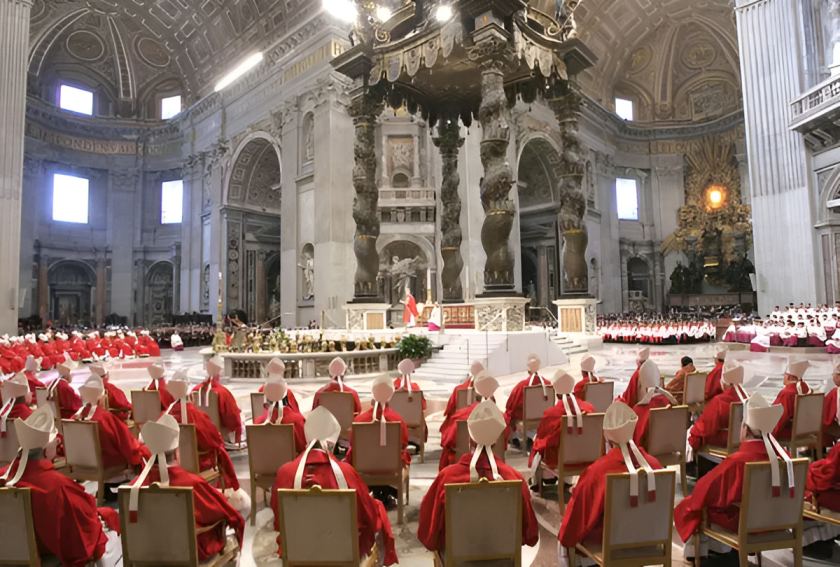When the head of the Roman Catholic Church dies, a detailed and time-honoured process begins to choose a new leader, overseen by the College of Cardinals.
This body of senior church officials, who come from different parts of the world, are tasked with electing a successor.
The election is carried out through a secret vote held inside the Sistine Chapel at the Vatican.
The College of Cardinals steps in to manage church affairs after the pope's death. These cardinals, most of whom wear red robes, are appointed directly by the pope. Many of them are senior bishops or hold high positions within the Vatican.
With the pope's seat vacant, the cardinals gather in what is called general congregations.
During these meetings, they prepare for the election of the next pope.
Decisions that require the pope’s authority, such as naming new bishops or calling large church meetings, are put on hold until a new pope is chosen.
Traditionally, the cardinals also oversee the funeral of the deceased pope.
This was the case after Pope Francis passed away at the age of 88 on Easter Monday. The Vatican was the first to announce his death.
The cardinals usually wait between 15 and 20 days before starting the official election process. When the time comes, they hold a special Mass at St. Peter’s Basilica to seek guidance through prayer.
This Mass is aimed at asking the Holy Spirit to lead them during the voting process.
The actual election, known as a conclave, happens inside the Sistine Chapel. Only cardinals who are younger than 80 years old take part in this. These members are referred to as cardinal electors.
Before voting begins, the cardinal electors take an oath of secrecy, and the chapel doors are sealed. They pledge not to reveal anything about the process or discussions that take place inside.
Each day, the cardinals hold four voting sessions—two in the morning and two in the afternoon.
To vote, each elector walks up to the altar beneath Michelangelo's famous painting of the Last Judgment, recites a prayer, and places a folded ballot in a large chalice.
Once the ballots are cast, three cardinals who serve as recorders count the votes and read the results aloud.
If no candidate receives the required two-thirds majority, the ballots are burned in a stove with chemicals that release black smoke. This lets the public know that no decision has been reached.
Voting continues until a candidate receives the necessary number of votes.
When this happens, the dean of the College of Cardinals approaches the chosen one and asks whether he accepts the role.
If he agrees, he selects a new papal name, changes into papal robes, and prepares to meet the world.
To let everyone know that a new pope has been elected, the final set of ballots is burned with chemicals that produce white smoke.
Crowds watching from St. Peter’s Square immediately understand the meaning of the white smoke.
Shortly afterward, the senior cardinal deacon steps out onto the balcony of St. Peter's Basilica and announces, "Habemus Papam"—Latin for "We have a pope."
This declaration signals that the church has a new leader.
The new pope then walks onto the balcony and blesses both the city of Rome and people around the world.
This ancient process has been followed for centuries and reflects the traditions of the Catholic Church. It ensures that the transition of leadership is handled with care, unity, and prayerful thought.

